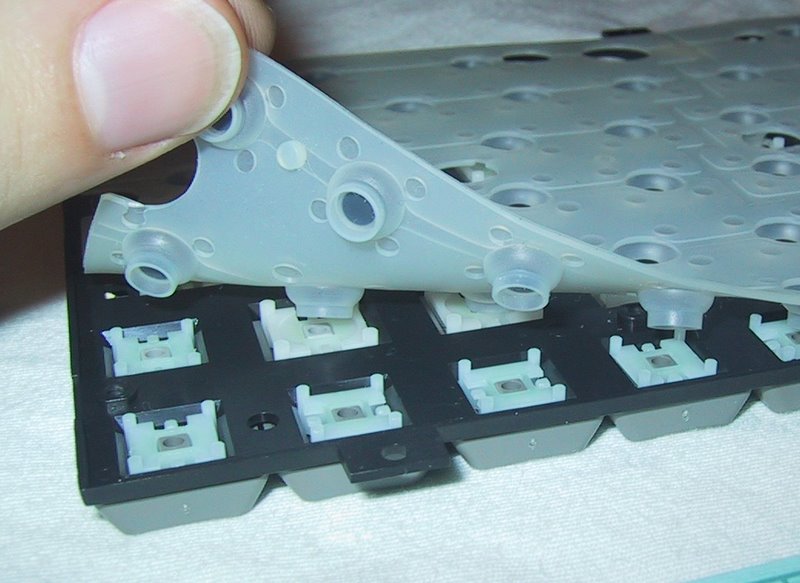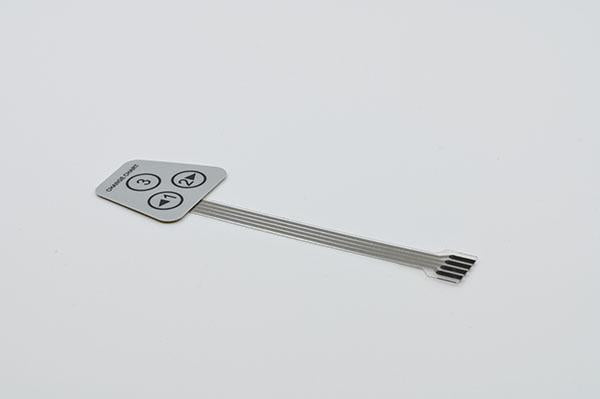Discover Exactly How Membrane Switches Feature and Their Role in Modern Electronics
Membrane Switches stand for a sophisticated combination of innovation and layout within the realm of contemporary electronic devices, serving as vital user interfaces in various tools. Comprehending the ins and outs of Membrane switch performance and their more comprehensive ramifications in improving customer experience invites further expedition into their design, benefits, and the ingenious developments shaping their future in modern technology.
What Are Membrane Switches?

Membrane buttons are distinguished by their durability and resistance to ecological variables, such as dirt, dampness, and severe temperatures. They can be tailored with numerous graphics, shades, and responsive responses choices, improving individual experience while preserving visual allure - membrane switches. The consolidation of printed circuits enables for seamless integration into gadgets, enhancing general functionality.
The flexibility of Membrane switches appears in their ability to support both basic and complicated control features. They can integrate functions such as LED signs and touch-sensitive innovation, satisfying specific individual needs. As innovation continues to advance, Membrane Switches remain necessary for allowing efficient and instinctive individual interfaces, therefore playing an essential role in the advancement of modern-day electronic devices.
Elements of Membrane Buttons
Membrane buttons are made up of several vital components that function together to develop a reliable and practical interface. The key aspects consist of the graphic overlay, glue layer, spacer layer, and conductive traces.
The graphic overlay offers as the interface, typically printed on a versatile substrate such as polyester or polycarbonate. This layer not just provides aesthetic charm but likewise consists of tactile responses, visual signs, and protective attributes. Beneath the visuals overlay exists the sticky layer, which protects the switch to the device and ensures longevity against environmental stress and anxieties.
The spacer layer is important for maintaining the required void between the graphic overlay and the circuit layer. When pressure is used, this void allows for the activation of the switch. The conductive traces, typically made from silver or carbon, create the electric paths that finish the circuit when the button is involved.
Additionally, a backing layer might be consisted of for architectural support and insulation. These parts team up seamlessly, making sure that Membrane switches are both resilient and user-friendly, making them important in numerous contemporary electronic applications.
Exactly How Membrane Switches Job
Exactly how do Membrane Switches function efficiently within electronic devices? Membrane Switches operate the concepts of pressure-sensitive innovation, using a layered construction that consists of graphic overlays, adhesive layers, and conductive components. When a customer applies stress to the switch, the leading layer warps, allowing the conductive elements below to make contact and complete an electric circuit. This action sets off the wanted feature within the gadget.
The design of Membrane buttons is vital for their effective procedure (membrane switches). The layers are thoroughly crafted to supply tactile responses, toughness, and resistance to ecological factors such as wetness and dust. The incorporation of domes-- little, increased locations within the switch-- improves tactile action, providing users with a recognizable click feeling upon activation
In addition, Membrane switches image source can be personalized in regards to dimension, shape, and graphics, making them ideal for different applications. They are frequently utilized in control panels, clinical devices, and customer electronics due to their sleek layout and integrity. On the whole, the efficient functioning of Membrane buttons is pivotal in boosting user communication and ensuring seamless operation in modern-day electronic devices.

Applications in Modern Gadgets
Using their distinct layout and performance, Membrane buttons have actually become important parts in a vast array of modern digital gadgets. These versatile interfaces are used in consumer electronics, industrial tools, medical tools, and vehicle controls, providing seamless user communication.
In customer electronics, Membrane buttons are commonly discovered in home appliances like microwaves, cleaning makers, and other house gadgets, where they make it possible for instinctive control with a Continued sleek profile. Their low-profile design helps with assimilation into portable tools, improving visual allure without compromising functionality.
In industrial applications, Membrane Switches serve as control panels for equipment, supplying sturdiness and resistance to rough atmospheres. Their capability to stand up to dampness and contaminants makes them optimal for usage in production and processing markets.
Medical tools additionally take advantage of Membrane buttons, click this link which are designed to be very easy to tidy and keep, making sure health in medical setups. They are commonly used in diagnostic devices, patient tracking systems, and portable medical tools, where integrity is extremely important.
Benefits of Membrane Buttons
One of the crucial benefits of Membrane buttons is their convenience, which permits them to be customized for a variety of applications across multiple sectors. These switches can be developed in numerous sizes and shapes, fitting unique item needs while supplying seamless integration right into devices. Their thin profile makes it possible for a small and streamlined layout, usually improving the visual charm of digital items.
An additional substantial benefit is their toughness - membrane switches. Membrane buttons are generally immune to dirt, moisture, and chemicals, making them perfect for extreme atmospheres. This resilience extends their lifespan compared to traditional mechanical buttons, lowering the requirement for regular substitutes
Furthermore, Membrane Switches offer cost-effectiveness. The manufacturing procedure involves printing innovations that lessen manufacturing costs, especially for large runs. This affordability, incorporated with low upkeep demands, makes them an eye-catching choice for producers.

Final Thought
To conclude, Membrane Switches represent a considerable advancement in interface innovation within contemporary electronic devices. Their layered building and construction, pressure-sensitive procedure, and flexibility to various applications emphasize their value across several sectors. The longevity and environmental resistance of Membrane Switches additionally improve their appeal, making them a favored selection for suppliers looking for personalized and trustworthy remedies. As the demand for durable and user-friendly user interfaces remains to expand, the duty of Membrane switches fit individual experience will undoubtedly increase.
Membrane Switches represent an innovative integration of technology and style within the realm of modern-day electronic devices, serving as essential user interfaces in countless tools.In the realm of modern electronics, Membrane Switches offer as essential parts that help with user communication with tools. As innovation proceeds to evolve, Membrane Switches continue to be essential for enabling efficient and instinctive user interfaces, therefore playing a critical function in the development of modern-day electronic devices.
Just how do Membrane Switches function properly within electronic gadgets? Generally, the reliable performance of Membrane switches is crucial in boosting user interaction and making certain smooth procedure in modern electronic devices.